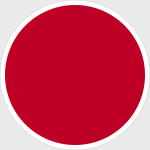Forces of Valor FOV812030B Imperial Japanese Navy Mitsubishi A6M2 "Zero" Fighter - Lt. Sumio Nouno, 11th Section, 4th Hikotai, IJN Carrier Hiryu, Pearl Harbor, Hawaii, December 1941 (1:72 Scale)
"We have resolved to endure the unendurable and suffer what is insufferable."
- Japanese Emperor Hirohito speaking to the Japanese people after the atomic bombings, August 1945
 The Mitsubishi A6M Zero was a light-weight carrier-based fighter aircraft employed by the Imperial Japanese Navy Air Service from 1940 to 1945.
The Mitsubishi A6M Zero was a light-weight carrier-based fighter aircraft employed by the Imperial Japanese Navy Air Service from 1940 to 1945.
It is universally known as Zero from its Japanese Navy designation, Type 0 Carrier Fighter (Rei shiki Kanjo sentoki), taken from the last digit of the Imperial year 2600 (1940), when it entered service. In Japan it was unofficially referred to as both Rei-sen and Zero-sen. The official Allied code name was Zeke (Hamp for the A6M3 model 32 variant); while this was in keeping with standard practice of giving boys' names to fighters, it is not definitively known if this was chosen for its similarity to "Zero".
In order to correct the deficiencies of the Model 32, a new version with folding wingtips and redesigned wing was introduced. The fuel tanks were moved to the outer wings, fuel lines for a 330 L (87 US gal) drop tank were installed under each wing and the internal fuel capacity was increased to 570 L (150 US gal). More importantly, it regained its capabilities for long operating ranges, similar to the previous A6M2 Model 21, which was vastly shortened by the Model 32.
However, before the new design type was accepted formally by the Navy, the A6M3 Model 22 already stood ready for service in December 1942. Approximately 560 aircraft of the new type had been produced in the meantime by Mitsubishi Jukogyo K.K.
According to a theory, the very late production Model 22 might have had wings similar to the shortened, rounded-tip wing of the Model 52. One plane of such arrangement was photographed at Lakunai Airfield ("Rabaul East") in the second half of 1943, and has been published widely in a number of Japanese books. While the engine cowling is the same of previous Model 32 and 22, the theory proposes that the plane is an early production Model 52.
The Model 32, 22, 22 kou, 52, 52 kou and 52 otsu were all powered by the Nakajima (Sakae) 21 engine. That engine kept its designation in spite of changes in the exhaust system for the Model 52.
Pictured here is a 1:72 scale replica of a Japanese Mitsubishi A6M2 "Zero" fighter that was piloted by Lt. Sumio Nouno, who was attached to the 11th Section, 4th Hikotai, then embarked upon the IJN Carrier Hiryu, which was participating in the raid on Pearl Harbor, Hawaii, during December 1941. Ba
Back Order!
Dimensions:
Wingspan: 5-1/4-inches
Length: 5-inches
Release Date: March 2022
Historical Account: "Swan Song" - In May 1942, the Japanese aircraft carrier Hiryu sailed on her final mission. Her aircraft complement consisted of 21 Mitsubishi A6M "Zero" fighters, 21 Aichi D3A "Val" dive bombers, and 21 Nakajima B5N "Kate" torpedo bombers. On June 4th, 1942, she took part in the battle of Midway. At 4:30 AM she launched a strike against Midway Island, destroying planes and damaging installations. After Kaga, Soryu and Akagi were disabled by air attack at about 10:25 AM, Hiryu was the only operational carrier left to the Japanese. She launched two waves of planes at 10:50 and 12:45 against Yorktown, heavily damaging the American carrier with bombs and torpedoes (she was sunk later by I-168).
Japanese search planes had located the remaining American aircraft carriers, and all surviving aircraft from the Carrier Striking Force had landed on Hiryű and were refueled and armed; but while preparing to launch a third strike against them, Hiryu was attacked at 5:03 PM by 13 SBD Dauntless dive bombers from Enterprise. She was hit by four 1000 lb (453.6 kg) bombs, three on the forward flight deck and one on or near the forward elevator. The explosions started fires among the aircraft on the hangar deck.
Although Hiryu's propulsion wasn't affected, the fires could not be brought under control. At 9:23 PM her engines stopped, and at 1:58 AM a major explosion rocked the ship. The order to abandon ship was given shortly afterwards and the survivors were taken off by the destroyers Kazagumo and Makigumo. Rear Admiral Tamon Yamaguchi and Captain Kaku remained on board as Hiryu was scuttled at 5:10 AM by torpedoes from Makigumo. She sank at 9:12 AM, taking 35 men down with her (another 350 or so had been killed by the bombs, fires and explosions). Thirty-five were rescued by the US Navy and taken prisoner. Admiral Yamaguchi's insistence on going down with his carrier robbed the Japanese of one of their most experienced and brilliant carrier admirals, while Admiral Fletcher, who abandoned the doomed Yorktown in the same battle, later became one of the primary architects of Allied victory in the Pacific.


